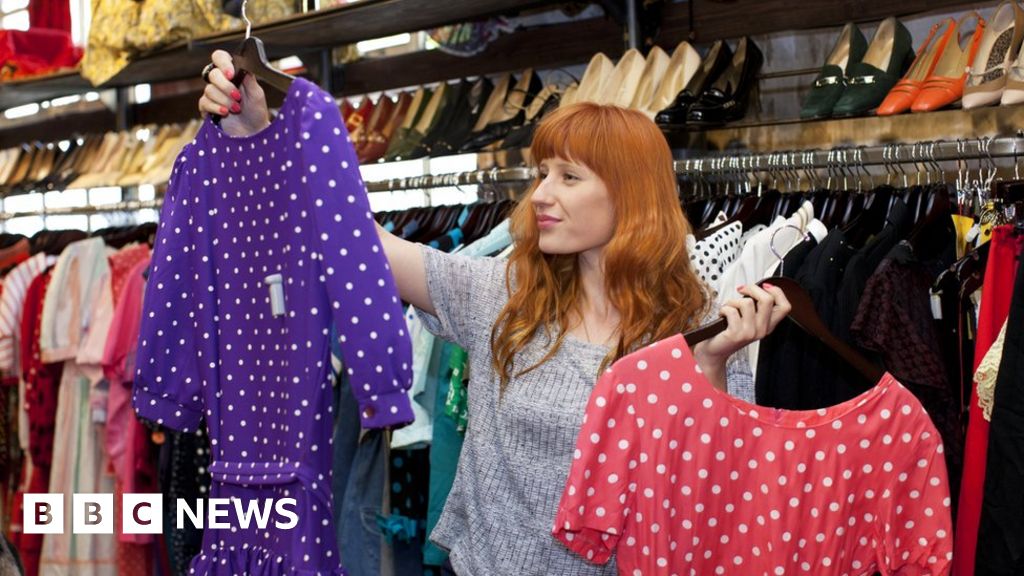
The landscape of consumer behavior has been significantly transformed by the rise of fast fashion. This term describes a model that enables the rapid production and sale of inexpensive clothing, allowing consumers to keep pace with constantly changing trends. The implications of this model extend beyond purchasing habits, affecting environmental concerns, social values, and economic behaviors.
Rapid Consumption and Increased Spending

Fast fashion has primarily encouraged a culture of excessive consumption. Consumers are drawn to the low prices and trendy offerings, leading to an increase in the quantity of clothing purchased. According to industry statistics, household spending in the UK on apparel nearly doubled from £30 billion in 2005 to around £60 billion in 2020. This highlights an entrenched consumer habit of prioritizing quantity over quality, driven by societal pressures and marketing strategies that suggest rapid turnover of fashion items is desirable[3].
Young consumers, particularly, have been identified as driving this trend. A survey indicated that over two-fifths of 16 to 24-year-olds purchase clothes online at least once a week, significantly higher than other age groups[1]. The allure of fast fashion is its ability to provide affordable and trendy garments, which feeds the desire for constant novelty and personal expression.
Environmental Awareness Versus Consumption Patterns

Despite a growing awareness of the adverse effects of fast fashion on the environment, consumer behavior has not always aligned with sustainable practices. The fast fashion industry is responsible for substantial environmental damage, generating over 92 million tons of waste annually and consuming vast amounts of water. This contradiction—a heightened awareness of sustainability alongside a strong demand for cheap, trendy clothing—creates a paradox where knowledge does not necessarily translate into mindful purchasing behavior[2][7].
Research has shown that even as consumers become more aware of the environmental issues associated with fast fashion, including poor labor conditions and high waste levels, they often continue to prioritize low costs and the latest styles over sustainable choices[5][6]. This has led to a growing body of literature that underscores the need for deeper understanding of the discrepancies between sustainability awareness and actual purchasing decisions[2].
Shift in Consumer Values and Influences
The role of social media and influencer marketing cannot be overstated in shaping consumer habits. Fast fashion brands leverage platforms like Instagram to reach consumers effectively, making brand engagement a key element of their marketing strategy. The significant rise in social media usage—from 970 million users in 2010 to over 4.48 billion by 2021—illustrates how intertwined these channels have become with consumer purchasing behavior, especially among younger demographics[3]. Influencers, seen as relatable and aspirational figures, have reshaped perceptions around fashion consumption, further reinforcing the fast fashion cycle[5].
However, this marketing strategy also comes with growing criticism. The trend toward ethical consumption has led consumers to demand more from brands, beyond merely trendy merchandise. As such, there is an increasing expectation for companies to adopt sustainable practices and transparency in their operations to counter the narrative of environmental degradation associated with fast fashion[4][7].
Economic Impacts on Consumer Behavior
Economic factors play a crucial role in consumer spending behaviors in the fast fashion sector. The recent economic uncertainties have altered spending priorities among consumers, particularly highlighting a divergence in how different demographics approach clothing purchases. For example, research indicates that women are more likely to cut spending on clothing than men, which can lead to significant shifts in sales for clothing retailers[4].
As inflation continues to affect disposable incomes, many consumers are becoming more cost-conscious. This awareness is reflected in their purchasing decisions, where the balance between wanting to keep up with fashion trends and the need to manage budgets is becoming increasingly difficult. Brands are responding to changing consumer priorities by refining their stock volumes and focusing on value and quality over variety[3].
Strategies for Sustainable Consumption
In light of the environmental repercussions and their influence on consumer habits, various strategies have emerged to promote sustainable consumption. One effective approach involves encouraging the purchase of second-hand items, which can help reduce overall waste and extend the lifecycle of garments. Online platforms for selling pre-loved clothing have gained popularity, allowing for more sustainable shopping practices amid the fast fashion boom[1][2].
Additionally, educating consumers about the environmental impacts of their choices and promoting a mindset shift toward slow fashion—characterized by quality materials, ethical labor practices, and timeless designs—can help counteract the fast fashion push[5][7].
Conclusion
The influence of fast fashion on consumer habits is profound, fostering a culture of rapid consumption yet simultaneously raising awareness of sustainability issues. The interplay between marketing strategies, consumer demographics, and economic conditions is complex and drives ongoing changes in purchasing behaviors. As society becomes increasingly aware of the environmental and ethical implications of fashion, the challenge remains to translate that awareness into actionable changes in consumption patterns. Ultimately, fostering a more sustainable fashion industry requires not only changes in consumer habits but also significant shifts within brands themselves, aligning operations with ethical and sustainable practices to create a healthier market for all.
Get more accurate answers with Super Pandi, upload files, personalized discovery feed, save searches and contribute to the PandiPedia.
Let's look at alternatives:
- Modify the query.
- Start a new thread.
- Remove sources (if manually added).